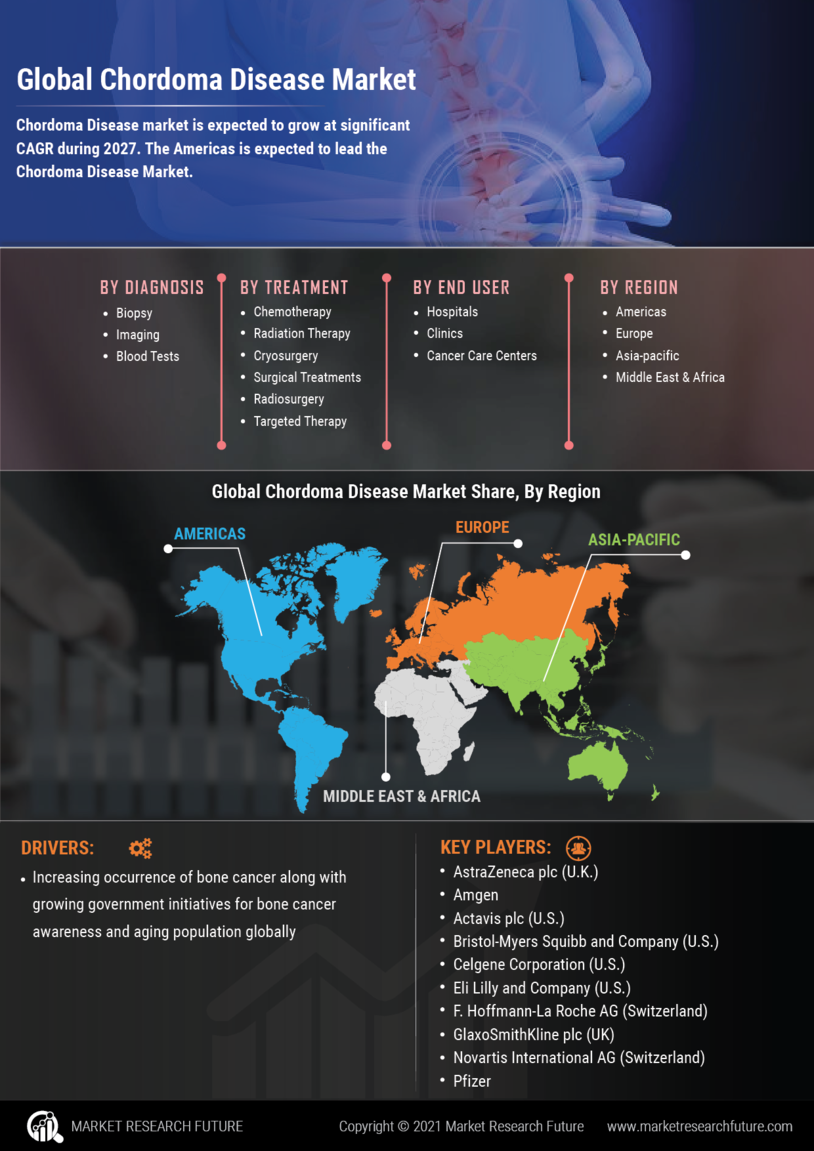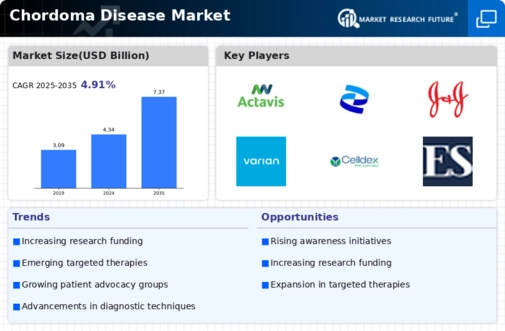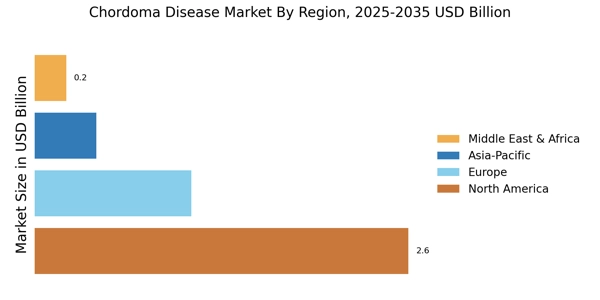Increased Awareness and Education
Increased awareness and education about chordoma are driving factors in the Chordoma Disease Market. Advocacy groups and healthcare organizations are actively working to disseminate information regarding the disease, its symptoms, and treatment options. This heightened awareness is crucial, as it encourages early diagnosis and intervention, which can significantly improve patient outcomes. Moreover, educational initiatives are fostering a better understanding of chordoma among healthcare professionals, leading to more accurate diagnoses. As awareness continues to grow, the demand for specialized care and treatment options is expected to rise, thereby propelling the Chordoma Disease Market forward.
Rising Incidence of Chordoma Cases
The increasing incidence of chordoma cases is a notable driver in the Chordoma Disease Market. Recent data indicates that chordoma, although rare, affects approximately 1 in 1 million individuals annually. This rising prevalence is likely to spur demand for innovative treatment options and specialized care. As awareness of this disease grows, healthcare providers are more inclined to diagnose and treat chordoma, thereby expanding the market. The need for effective therapies is underscored by the fact that many patients experience delayed diagnosis, which can lead to more advanced disease stages. Consequently, the Chordoma Disease Market is poised for growth as stakeholders seek to address this unmet medical need.
Advancements in Research and Development
Ongoing advancements in research and development are pivotal to the Chordoma Disease Market. The scientific community is increasingly focused on understanding the molecular mechanisms underlying chordoma, which may lead to the discovery of novel therapeutic targets. Recent studies have highlighted the potential of personalized medicine approaches, which could significantly enhance treatment efficacy. Furthermore, the development of new drug candidates, including targeted therapies and immunotherapies, is gaining momentum. This influx of innovative treatments is expected to reshape the market landscape, providing patients with more effective options. As a result, the Chordoma Disease Market is likely to experience a surge in investment and interest from pharmaceutical companies.
Emergence of Innovative Treatment Modalities
The emergence of innovative treatment modalities is transforming the Chordoma Disease Market. Recent developments in surgical techniques, radiation therapy, and targeted drug therapies are providing new avenues for patient management. For instance, advancements in proton therapy have shown promise in treating chordoma, offering a more precise approach to tumor targeting. Additionally, the exploration of combination therapies is gaining traction, as it may enhance treatment efficacy and reduce recurrence rates. These innovations are likely to attract investment and research interest, further stimulating growth in the Chordoma Disease Market. As new treatment options become available, patients will benefit from improved outcomes and quality of life.
Growing Support from Pharmaceutical Companies
Growing support from pharmaceutical companies is a significant driver in the Chordoma Disease Market. Many companies are recognizing the unmet needs of chordoma patients and are investing in research to develop effective therapies. This trend is evidenced by the increasing number of clinical trials focused on chordoma treatments, which have seen a rise in participation from major pharmaceutical firms. Collaborations between academia and industry are also becoming more common, facilitating the translation of research findings into clinical applications. As pharmaceutical companies continue to prioritize chordoma, the market is likely to expand, providing patients with access to cutting-edge therapies and improving overall treatment outcomes.


















Leave a Comment